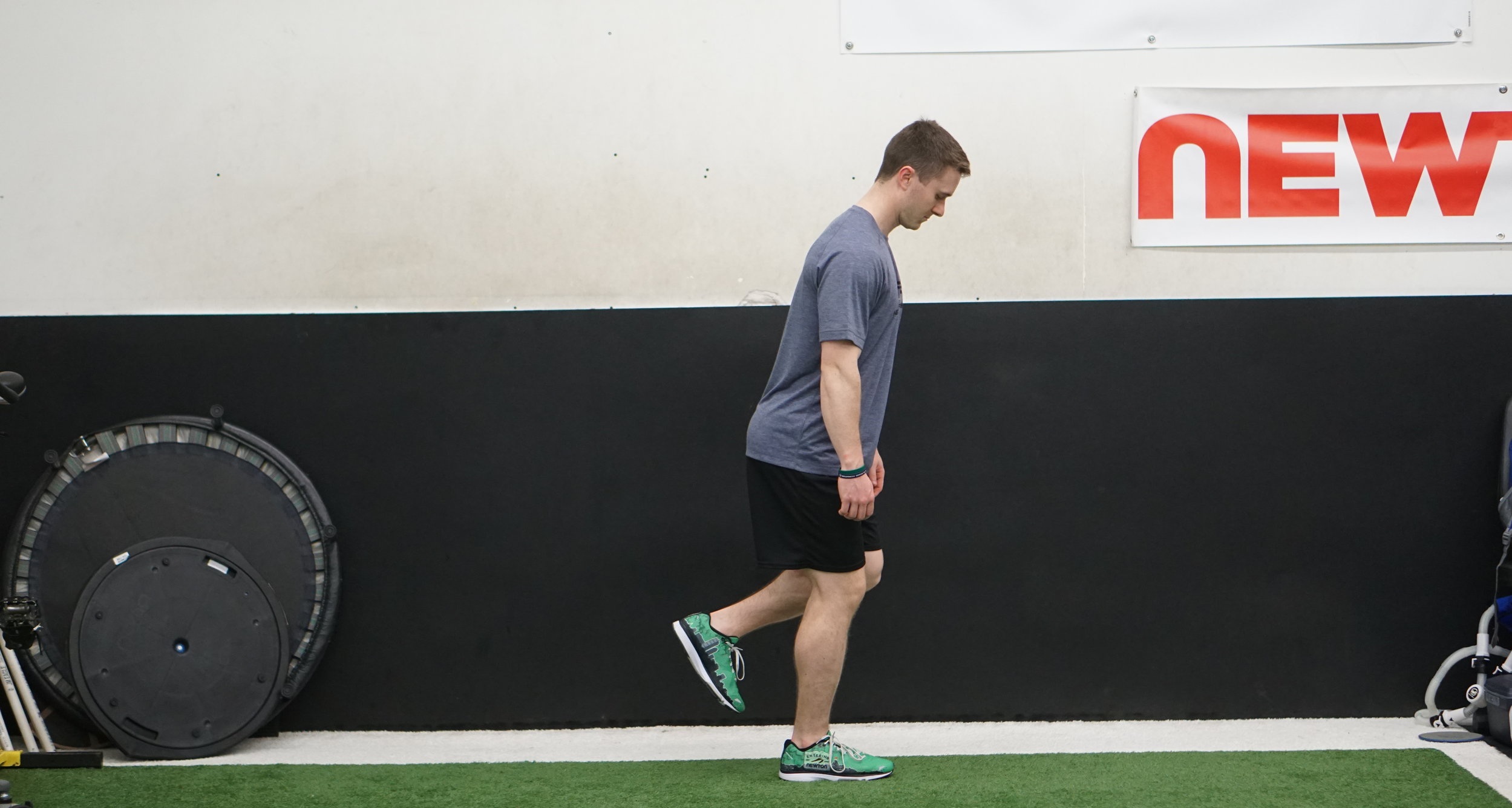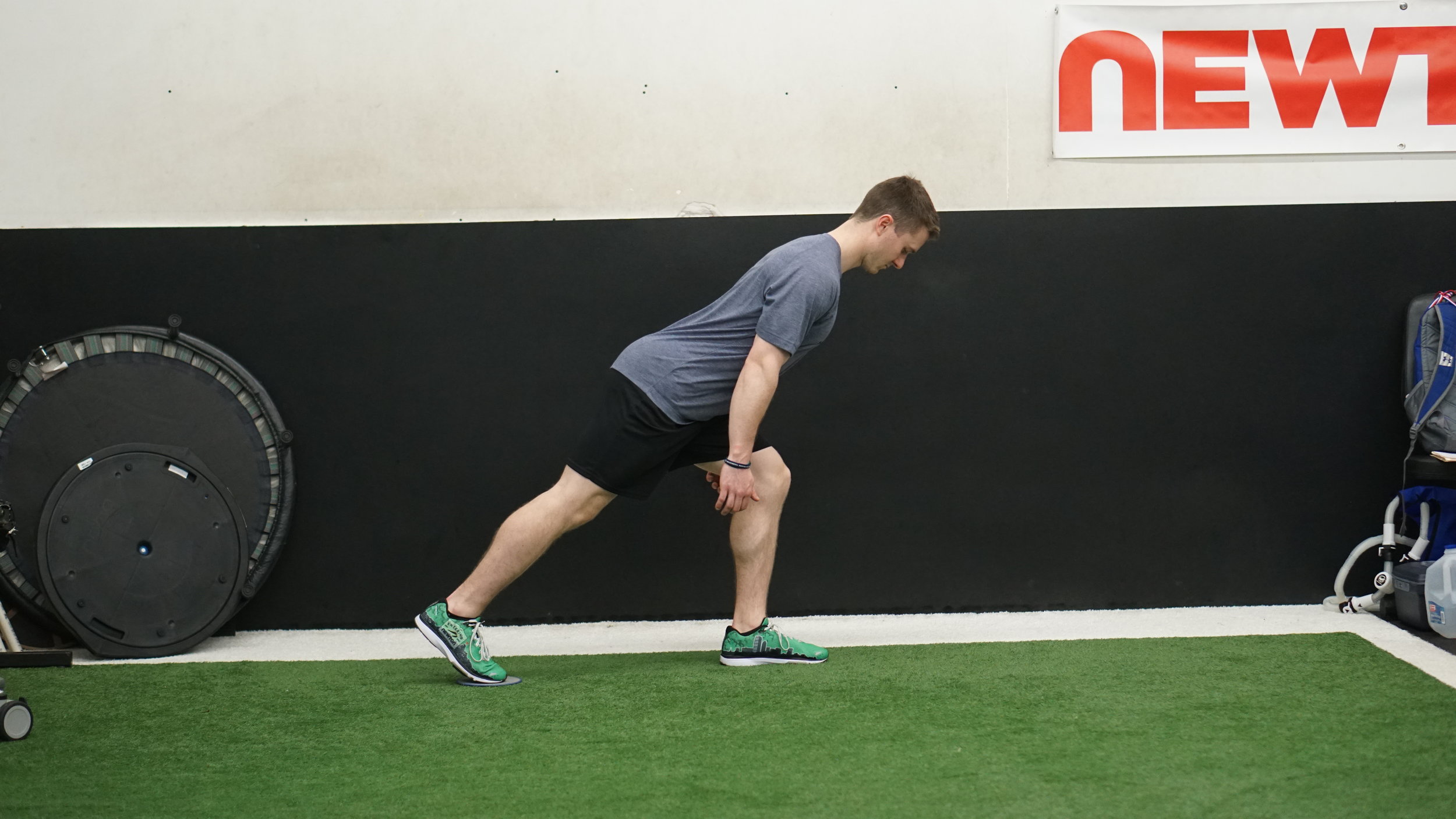Troubleshooting the Single Leg RDL
The Single Leg RDL has a handful of strength and stability benefits up and down the kinetic chain. Intrinsic muscles of the foot and major movers in the hamstrings, glutes, and abdominals work in unison to stabilize the ankle, knee, and hip. In order to reap all of the benefits from the movement, understanding the technical aspects is important; and regressing and progressing the exercise when appropriate to do so can change what is emphasized.
I believe the hip hinge pattern on both one and two legs to be incredibly important for athletes of all ages to learn and master. It seemingly “clicks” with some and despite all of the cues, escapes others. Having a variety of teaching tools and variations at my disposal to help athletes who struggle with different facets of the movement has been helpful.
Three of the primary challenges with the Single Leg RDL are the ability to move evenly at the hips when on one leg, the balance requirements, and maintaining a neutral spine (flat back). Below are 10 variations, not necessarily regressions or progressions but more so modifications, that alter the demand and address the three aforementioned difficulties.
Bodyweight Single Leg RDLs would be considered the standard for the movement. Bend the knee in your plant leg slightly, find contact with the ground through your big toe, and bring your rear leg to a right angle. Slowly break at your hips and hinge. Your front knee should stay in line with the middle of your foot (not wobble in or out) and your shin should remain relatively vertical. All of these technique cues apply to the following nine variations.
These two Wall-Assisted Single Leg RDL variations create more points of contact. By reducing the balance demand, it will allow the athlete to focus more on the single leg hip hinge pattern. The second option (with one foot against the wall) allows the athlete to overload the exercise by holding dumbbells.
Single Leg RDL with Sliders also increases stability by maintaining contact with the ground. Soften the knee of the front leg, press down into the slider, and hinge as your leg extends behind your center of mass.
This Single Leg RDL variation with a band can provide enough of an external cue to teach athletes how to hinge properly while on one leg. The tension of the band also makes you feel more stable.
This Foam Roller-Assisted Single Leg RDL has been an effective teaching tool for some athletes. It addresses the incorrect tendency to turn the movement into more of a squat than a hinge.
We’ve had success using the Kettlebell handcuff protocol with athletes who lose upper body stability and struggle to maintain a neutral spine when performing any hip hinge pattern. By holding the Kettlebell in the position depicted above, athletes are unable to round at their upper back. The Kettlebell also provides some external feedback for athletes to push their hips into.
By creating and maintaining tension in the band, athletes engage their upper and mid back and more successfully maintain a neutral spine throughout the movement. This variation can be used as a teaching tool but also as a progression to standard Single Leg RDLs.
All of the same technique cues from the Bodyweight Single Leg RDL apply. But understand that when you reduce stability (via the Airex pad), you also reduce your ability to load the movement. This variation (ideally barefoot) would increase the demand on the stabilizing muscles in the ankle. Recognize the purpose and program accordingly.
Once athletes become proficient at Bodyweight Single Leg RDLs, they can be loaded with dumbbells by the side or with a barbell.
Each of the variations covered here slightly alter the demands of the exercise. Observing your athletes move will provide the necessary insight into which variation could be an effective teaching tool to improve movement quality.
Follow us on Instagram @unified.hp or find us on Facebook




















